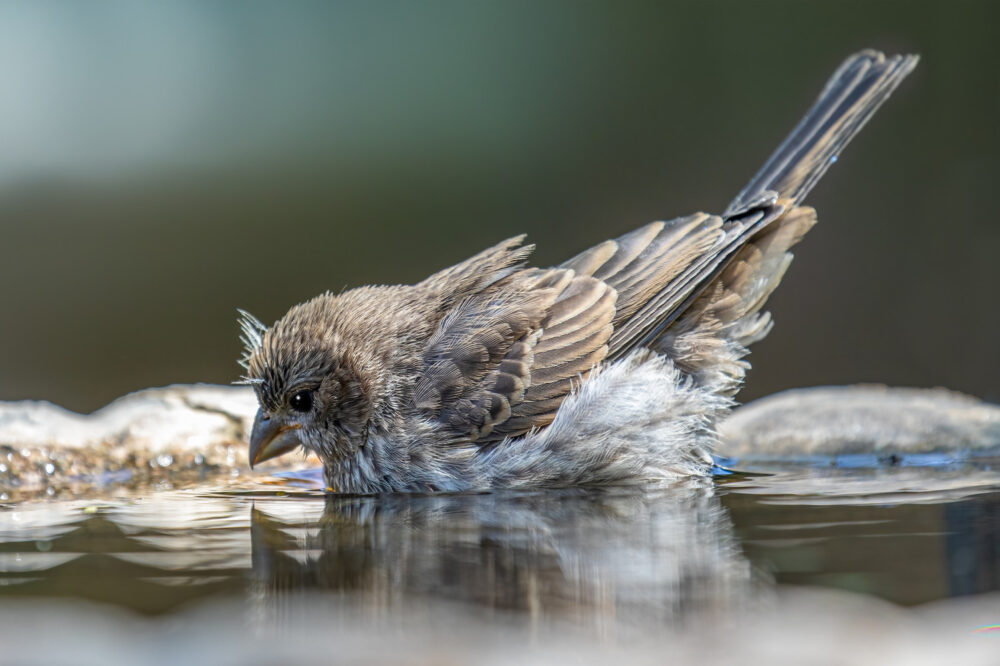We have much more to do and your continued support is needed now more than ever.
Ready to Fight the Stealth Attack on Wildlife? Part Four: Wolverines

Just the name wolverine evokes images of a ferocious fighter, able to take down prey many times its size. However, the U.S. government isn’t one of them.
The largest of the land-dwelling weasels, this predator has been named a Gulo gulo (from “glutton”) for its supposed voracious appetite. But much of what it eats it hasn’t actually killed itself but found as carrion while on the prowl. The wolverine’s long, shaggy coat allows it to survive in harsh arctic and subarctic environments in Alaska, boreal northern Canada, Europe and Asia, as well as in the alpine northern Cascades in Washington and Rocky Mountains in Idaho, Montana and Wyoming. Its incredible sense of smell can find prey beneath snow, its claws and teeth can tear apart even frozen carcasses and it can travel for hundreds of miles in a week scoping for food.
Their built-in survival gear, however, cannot protect them from being vulnerable to climate change. Wolverines need deep snow that lasts well into late spring to build dens for their newly born kits. But snow is melting earlier, and the wolverine’s formerly continuous forest is being fragmented into disconnected islands of limited habitat. As few as 250 wolverines may be left in the contiguous United States, of which only 35 individuals are thought to be successfully breeding. The population needs sufficient continuous, snowy habitat to find mates, reproduce and survive.
Dying in Wait
Putting the wolverine on the U.S. Endangered Species List could help preserve habitat vital to the species’ survival. Yet, as ferocious as this mighty woodland warrior might appear, the wolverine cannot muscle its way onto the list. It is among at least 252 “candidate species” waiting to get the protections the Endangered Species Act and its list affords from a variety of threats, such as overhunting, pollution and habitat destruction. The Endangered Species Act and its list are tools that have proven their worth. They have pulled animals back from the brink of extinction, including our nation’s iconic American bald eagles, wolves, Florida panthers and black-footed ferrets, just to name a few.
The Wolverine’s Other Opponent
This past summer, key leaders in the U.S. House of Representatives sideswiped animals both on the Endangered Species List and those species waiting for its protection with a potentially fatal blow. An “extinction rider” to the 2012 budget bill was proposed that would have prevented the U.S. Fish and Wildlife Service from spending any money to implement some of the most crucial sections of the Endangered Species Act, including listing any new species, designating habitat as critical to a species’ survival or changing the status of any species from threatened to endangered.
This bold attack on wildlife was met with fierce resistance from the National Wildlife Federation (NWF). With the help of our supporters and wildlife champions in the U.S. Congress, NWF led an effort to stop this dangerous proposal. By a vote of 224 to 202, the measure was defeated with bipartisan support on the floor of the House of Representatives.
Despite this victory, the battle is far from over. The “extinction rider” is only a preview of what could be in store for wildlife from Congress. National Wildlife Federation expects the attacks on imperiled species to come harder and faster in the coming months.
Speak Up for Wolverines
![]() Help protect wolverines and other imperiled species by sending a strong message to Congress to stop the stealth attacks on wildlife. Even the mighty wolverine and all of those lying in wait for protection need us to be fighting in their corner.
Help protect wolverines and other imperiled species by sending a strong message to Congress to stop the stealth attacks on wildlife. Even the mighty wolverine and all of those lying in wait for protection need us to be fighting in their corner.
Wildlife in the Crossfire – About this Series
This four-part blog series highlights wildlife caught in the crossfire of the federal budget battle raging in Congress and gives you the tools to fight back. Now is the time to stand up for wildlife.
Fact: America’s investment in wildlife is not to blame for the budget problems we face today. Over the past 30 years, America’s investment in parks, wildlife, clean water and clean air has fallen from 1.7% to 0.6% of federal spending.





















